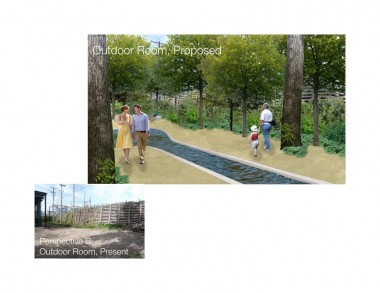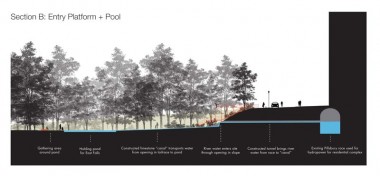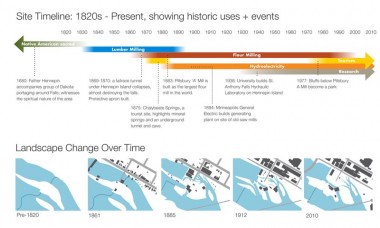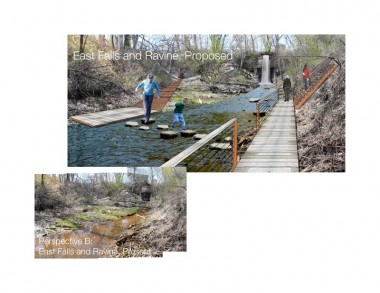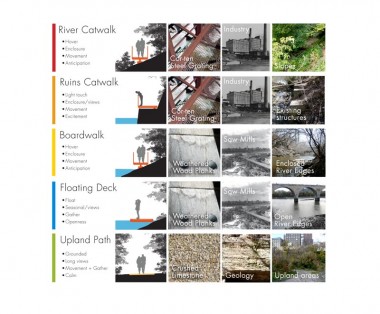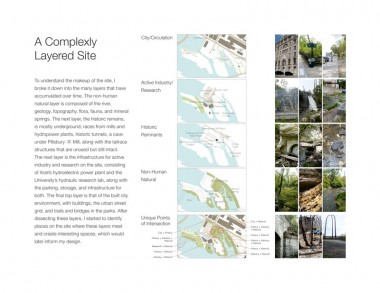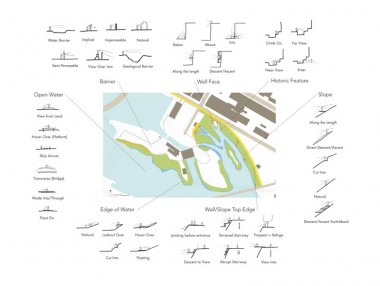Project Description
In my capstone project, I experimented with the design process to investigate how a highly-layered urban riverfront site with a rich historic past could be encountered via a trail system based on experiential qualities and historical narrative.
St. Anthony Falls is the birthplace of Minneapolis. In its former glory, the cataract had a magnetic power that drew spiritual seekers and pioneering industry men alike. On the site of the former eastern portion of these falls, we find the overgrown bluffs, murky waterways, and mill ruins of Pillsbury Park. Adjacent to the park is Hennepin Island, the epicenter of river industries that have significantly altered the landscape as they sought to harness the physical power of St. Anthony Falls.
The site’s historical and cultural significance makes it an important landscape within the heritage district of downtown Minneapolis. It offers unique views of historic structures along the river, the downtown skyline, active industry on the river, and St. Anthony Falls. However current access to this important landscape is limited and the physical remains of its industry and ecology have been neglected. Tensions between movement and connection, access and restriction, historic uses and current uses, and abandonment and care make this an extremely complex site. With its layers of new and old infrastructure, Hennepin Island and Pillsbury Park are physical records of our historic exploration, use, and understanding of the power of water. As a unique site on a historic riverfront, they offer an opportunity to experience the many forms of the power of the river, as witnessed in the landscape itself.
My analysis process focused on understanding the history and the experiential qualities of the site. I developed a process of analyzing the site composition in terms of landscape features and layers, as well as the experiential qualities and movement through the site. My design process worked off this analysis, and included defining a sense of place, discovering new experiential typologies, outlining spatial and experiential concepts, and constructing a path system typology.
My vision for this site is that Pillsbury Park + Hennepin Island will be part of a larger East Bank experience in which the power of the Mississippi River is celebrated. Visitors will explore the site through exciting paths that provide a variety of experiences of the river and the river’s history.
In the final plan, an abandoned power plant becomes the Water Power Museum, which serves as an anchor to the east bank. The Pillsbury ‘A’ Mill re-opens the abandoned mill races under Main Street to provide hydroelectric and hydrothermal power to the new complex of buildings. Some of the water from this tailrace is rerouted into the park to reintroduce water to the location of the former east falls. A Highlights Loop trail off the park’s main entrance provides a quick look at the most interesting features in the park. The Water Power Heritage Loop, connecting to the Heritage Trail, provides an experience of all features of the site, stopping at points that provide views of the river and historic features. Several underground tailraces and historic tunnels are opened up for tours offered through the Water Power Museum. Hennepin Island is made accessible not only for picnicking and hiking, but would also function as flexible space for temporary exhibitions related to Xcel, the Stream Lab, or more artistic expressions related to the river.
